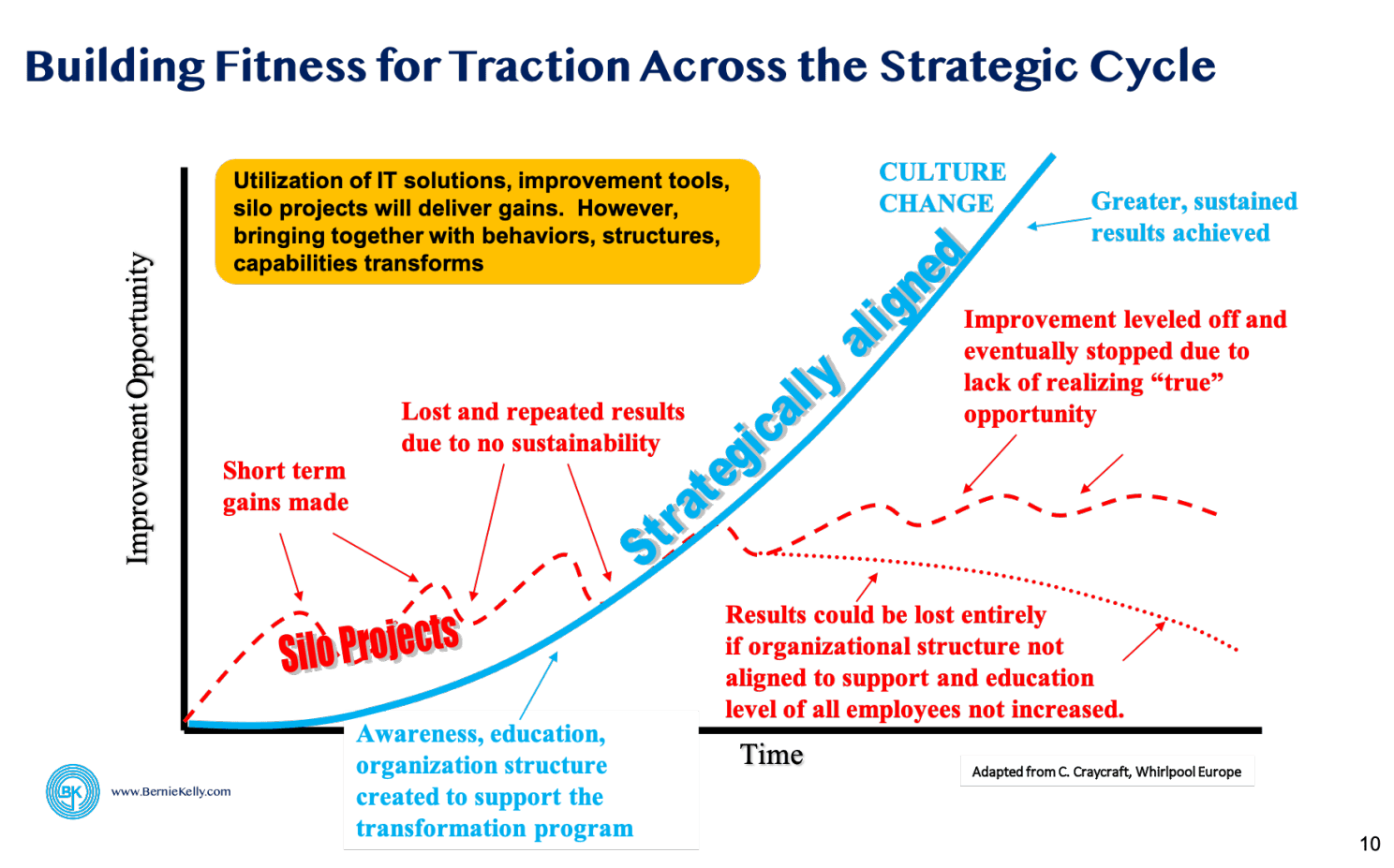– Bernie Kelly –
Traction across strategic cycles: a critical measure as cycles accelerate.
The new Board and Executive had recently launched a ‘transformation’ program. There was considerable focus and promise of appropriate resourcing. This was a top priority and time was being made to engage teams for deployment at pace. In these scoping for implementation workshops, it became clear that two of the projects that had been initiated had been established practice in a previous period within the organisation. There was no outward evidence of the capability now. However, longstanding team members not only knew the insight they could explain the work required to lift from the current performance. They could also explain when the topic faded from focus and was lost from the corporate capability.
This surprised the newly appointed Chief Transformation Officer.
We reflected on the loss, then the gift this is to see early as a leader of business transformation.
I have seen this pattern directly in a number of industries and have now seen directly twice where an organisation, that had not only been active on a topic but noted among peer organisations for ‘excellence’ on that topic 3-4 strategy cycles ago.
3-4 strategy cycles was 15-20 years ago for many years, more recently 9-12 years has become the norm. With the rate of change accelerating and strategic cycles shortening (as explored here (1) If the pace of change is like being on a treadmill, 2020 was running. The near-future will be flat out sprinting. | LinkedIn ) traction, and loss of traction, across strategic cycles is going to have a feedback loop more visible to Boards, investors, team members, and network stakeholders.
Traction of Quarterly sales is an established key indicator, we are heading into territory where traction across strategic cycles will also be a noted differentiator of success.
Like many aspects of strategic execution, the root of whether there will be ongoing traction or ‘wheel spinning’ across strategic cycles goes back to the program design phase.
While this has been observed in multiple examples and demonstrated a number of times in my own case studies, for a quantified comparative case study I still come back to the Whirlpool Europe research shared with me by Professor Peter Hines of Cardiff University and SA Partners almost 20 years ago as the reference. This was a large sample, in the same market situation, same timeline, same products, same performance measurement system that measured the two different approaches.

Most leadership teams nod when they see this.
To make progress with this insight it is important to surface the number one factor that gets in the way for teams. There is a conflicting pull when we are scoping and designing programs.
Many Executives and specialist project consultants have lived their career contributing activity, without progress when measured across strategic cycles. This is a huge waste of talent and effort and I believe is the defining opportunity for transformative leaders this decade.
It can go against the flow for some Executives and specialist project consultants who have been brought up on delivering ‘quick wins’ without looking at traction through and across strategic cycles.
The ‘sugar hit’ of ticking off a project, reporting the win, has a strong psychological pull. Even when we intellectually understand the benefits of a more thought-through approach. We know this from other areas of our life such as health and fitness, financial investment and relationships.
The insight is famously described in the Stanford Marshmallow experiment – the ability to resist the temptation of instant gratification and the path of significant impact on longer term effectiveness.
Marshmallow Test Experiment | Simply Psychology
I am passionate about seeing more successful transitions this decade and less people caught suffering disruption.


